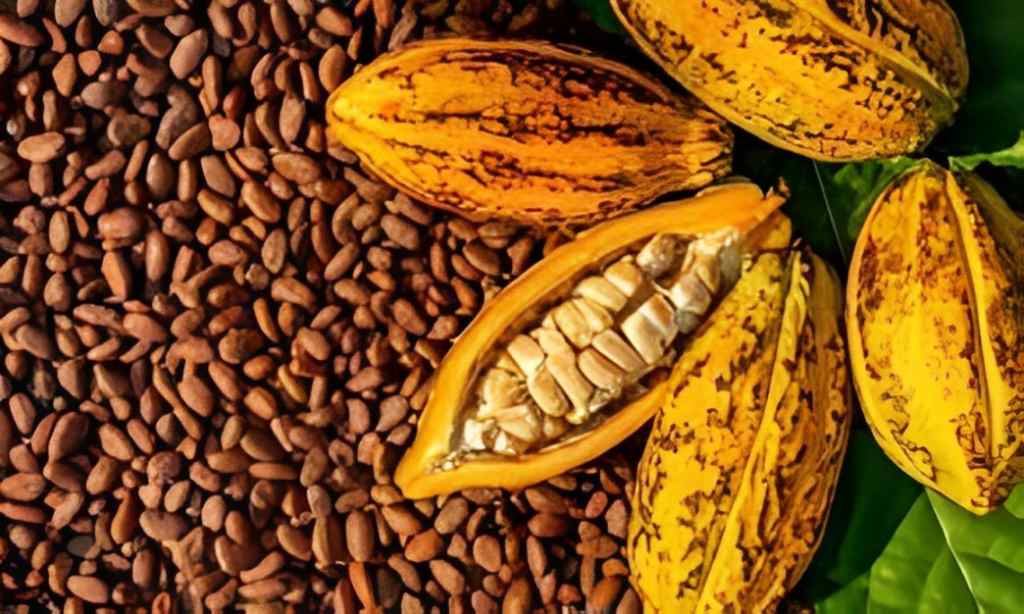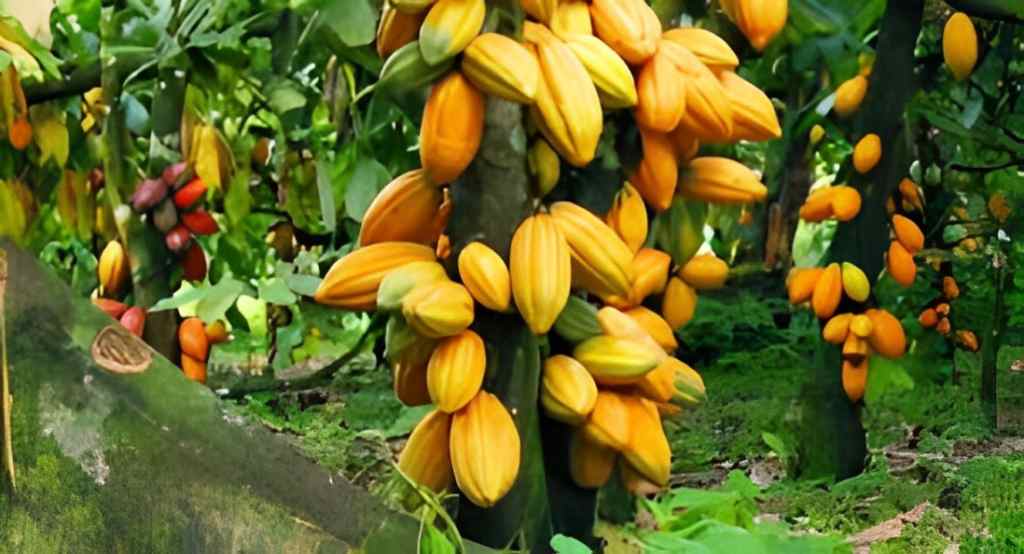No products in the cart.
Return To Shop
COCOA FARMING:
COCOA FARMING: A GUIDE TO SUSTAINABLE GROWTH AND PRODUCTION
Cocoa farming plays a crucial role in the global economy, providing the key raw ingredient for one of the world’s most beloved products—chocolate. While cocoa is grown primarily in West Africa, Latin America, and Southeast Asia, its demand is truly global. To ensure sustainable and profitable cocoa farming, it’s essential to adopt best practices that not only enhance productivity but also protect the environment and support local communities.

The Importance of Cocoa Farming
Cocoa farming is a lifeline for millions of farmers worldwide, particularly in developing countries like Ivory Coast and Ghana, which account for over 60% of global production. For many, it’s their primary source of income. The industry’s value stretches far beyond the local economy, impacting international markets, supply chains, and major global brands.
Beyond its economic importance, cocoa farming has deep cultural roots in many farming communities. It offers opportunities for improving livelihoods but also presents challenges, particularly in areas such as environmental sustainability, child labor, and fair pricing.
Best Practices for Sustainable Cocoa Farming
- Soil Management and Fertility Cocoa plants thrive in well-drained, nutrient-rich soils. Regular soil testing helps farmers understand their soil’s nutrient profile, allowing them to apply the appropriate organic or inorganic fertilizers. Additionally, farmers should practice crop rotation and agroforestry (the integration of trees into farmland) to preserve soil health and prevent erosion.
- Shaded Farming Cocoa plants are shade-tolerant, meaning they benefit from being grown under the canopy of larger trees. Shade trees help to moderate temperature, conserve moisture, and promote biodiversity. This method also helps to mitigate the effects of climate change, as trees absorb carbon dioxide, playing a crucial role in reducing the carbon footprint of cocoa production.
- Integrated Pest Management (IPM) One of the major challenges in cocoa farming is the management of pests and diseases, such as cocoa pod borer and black pod disease. Instead of relying solely on chemical pesticides, farmers should use integrated pest management techniques, combining biological controls (such as natural predators), cultural practices (such as proper pruning), and minimal chemical use to control pests sustainably.
- Water Management Efficient water use is vital for healthy cocoa growth. Drip irrigation systems and rainwater harvesting can help farmers reduce their dependency on external water sources, ensuring their cocoa trees get the necessary hydration while minimizing waste.
- Training and Knowledge Transfer Cocoa farming techniques evolve over time. Access to training programs on new farming methods, pest control, and sustainable agricultural practices can drastically improve yields. Collaborations between farmers, governments, NGOs, and private companies can ensure that smallholder farmers receive the support and education they need to improve their productivity sustainably.
- Fair Trade and Certification Consumers are increasingly interested in how their food is sourced, leading to a rise in fair trade and organic certifications. Certified cocoa ensures that farmers receive fair prices for their crops and that the farming practices follow ethical guidelines, benefiting both the farmer and the environment. Certification programs also provide farmers access to international markets and often come with financial incentives.

Challenges Facing Cocoa Farmers
While cocoa farming offers significant benefits, the industry faces several challenges. Climate change, for instance, threatens cocoa-producing regions with increased temperatures and unpredictable weather patterns, which can lead to lower yields. Addressing these challenges requires farmers to adopt more resilient farming practices, including drought-resistant cocoa varieties and sustainable farming techniques.
Moreover, the issue of fair compensation remains a critical challenge. Many cocoa farmers still live below the poverty line, despite the significant value of the global chocolate market. This imbalance underscores the importance of fair trade initiatives and the role that governments and corporations play in ensuring farmers receive adequate compensation for their labor.
The Future of Cocoa Farming
The future of cocoa farming lies in its ability to innovate and adopt sustainable practices. As global demand for chocolate rises, so too does the need for responsible farming methods that protect the environment, improve yields, and ensure a stable income for farmers. Investment in research, farmer education, and sustainable infrastructure will be key to securing the future of cocoa production.
In conclusion, cocoa farming remains a vital industry that supports millions of families worldwide. By focusing on sustainability, fair trade practices, and adopting modern farming techniques, the industry can continue to grow while ensuring that cocoa farmers and the environment prosper together.
By focusing on the long-term benefits of sustainable cocoa farming, businesses and consumers alike can contribute to a healthier, more ethical industry that supports farmers, protects the planet, and provides the world with one of its most beloved products.



Add comment
You must be logged in to post a comment.